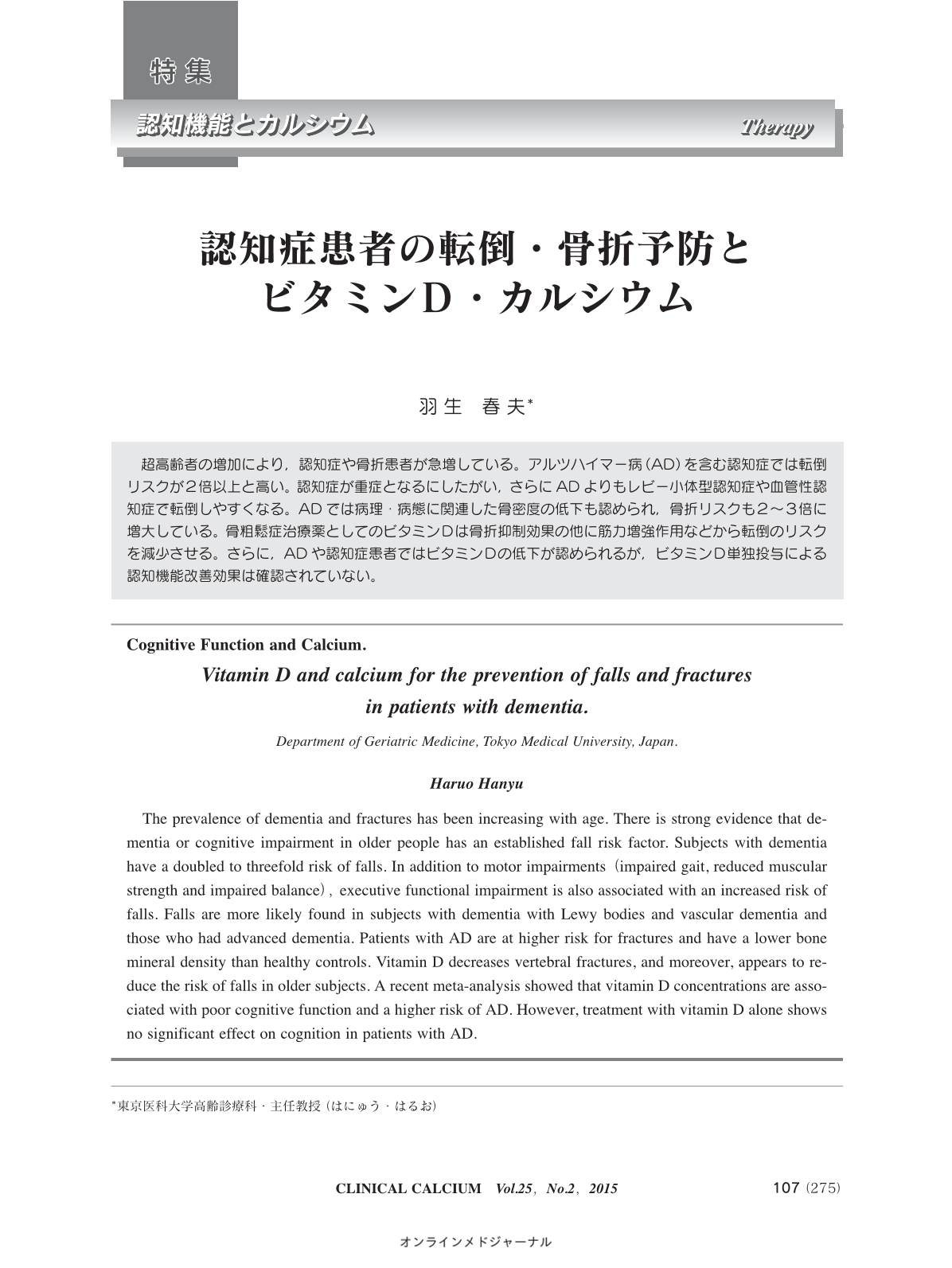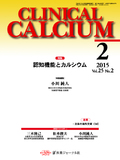Japanese
English
- 有料閲覧
- Abstract 文献概要
- 1ページ目 Look Inside
- 参考文献 Reference
超高齢者の増加により,認知症や骨折患者が急増している。アルツハイマー病(AD)を含む認知症では転倒リスクが2倍以上と高い。認知症が重症となるにしたがい,さらにADよりもレビー小体型認知症や血管性認知症で転倒しやすくなる。ADでは病理・病態に関連した骨密度の低下も認められ,骨折リスクも2~3倍に増大している。骨粗鬆症治療薬としてのビタミンDは骨折抑制効果の他に筋力増強作用などから転倒のリスクを減少させる。さらに,ADや認知症患者ではビタミンDの低下が認められるが,ビタミンD単独投与による認知機能改善効果は確認されていない。
The prevalence of dementia and fractures has been increasing with age. There is strong evidence that dementia or cognitive impairment in older people has an established fall risk factor. Subjects with dementia have a doubled to threefold risk of falls. In addition to motor impairments(impaired gait, reduced muscular strength and impaired balance),executive functional impairment is also associated with an increased risk of falls. Falls are more likely found in subjects with dementia with Lewy bodies and vascular dementia and those who had advanced dementia. Patients with AD are at higher risk for fractures and have a lower bone mineral density than healthy controls. Vitamin D decreases vertebral fractures, and moreover, appears to reduce the risk of falls in older subjects. A recent meta-analysis showed that vitamin D concentrations are associated with poor cognitive function and a higher risk of AD. However, treatment with vitamin D alone shows no significant effect on cognition in patients with AD.



